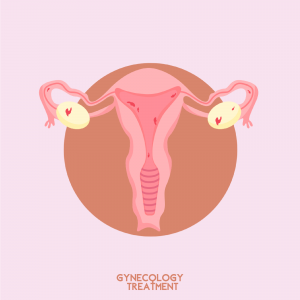The ovaries are 4x3x2 cm organs, one on each side of the uterus. They are responsible for secreting hormones and producing eggs. The egg produced is captured by the tubular organs located next to it. The fusion of sperm and egg takes place in the type organs. Ovaries can develop cancer over time. The average age of onset of ovarian cancer is 65 years.
Who is more likely to develop ovarian cancer?
The mechanisms of ovarian cancer are becoming clearer every day. It is more common in women who start menstruating at an early age and enter menopause late. Other risk factors include not having given birth, not breastfeeding, sexually transmitted diseases, living in an industrialized society and family history.
Recent studies have shown that familial cancer genes are the cause of 20% of ovarian cancer.
Ovarian cancer and breast cancer have common gene defects. Every patient with cancer should be examined for these genes. In the presence of these genes, the age of cancer can be reduced to 45-50 years. PARP inhibitors, which have recently come into use, increase life expectancy in these patients. Familial breast-ovarian cancer genes should be checked to protect other relatives of the patient and to use effective drugs.
How does ovarian cancer spread and how can it be detected?
There is no screening method for ovarian cancer as there is for breast and cervical cancer. Therefore, it is not possible to conduct social screening by calling every woman. Patients with a familial breast-ovarian cancer gene are followed up with ultrasound and blood tests. Patients with ovarian masses or cysts should be checked regularly for cancer. If the cyst is large, solid (meat-like areas), multi-compartmentalized and chambered, has blood flow, and finger-like protrusions, the possibility of cancer is high. If there is fluid in the abdomen, it may be a sign of advanced cancer.
Ovarian cancer spreads directly into the abdomen. First it spreads to the peritoneum and uterus, and in advanced stages to the intestines, the fatty tissue called omentum and all intra-abdominal organs such as stomach, liver and spleen.
75% of patients consult a doctor in advanced stages. There are no specific symptoms for the disease. Complaints such as abdominal swelling, indigestion, palpable mass, weight loss and weakness are common.
What is the treatment and preparation phase of ovarian cancer?
The treatment for ovarian cancer is removal of all tumor tissue followed by chemotherapy. Ovarian cancer surgery is a very challenging and specialized surgery. It should be performed by people who are trained and experienced in this field. The most important point in the patient’s life expectancy and the course of the disease is to leave no tumor in the surgery. For this reason, in addition to the uterus and ovaries, organs such as the intestine and spleen may also need to be removed.
If preoperative MRI scans or other films show that the disease is very advanced and has spread to areas that cannot be removed, such as the root of the intestine, surgery is postponed. The patient receives chemotherapy and then undergoes surgery. Chemotherapy is given again after the surgery.
What is the prognosis for ovarian cancer?
Most patients relapse (recur) within the first two years. Because of these characteristics, ovarian cancer treatment is a long and patient path, like running a marathon. In case of recurrence, surgery and chemotherapy options are used again.
Ovarian cancer is a disease where early diagnosis and surgery are very important.
What is hot chemotherapy for ovarian cancer? HIPEC is simply the administration of chemotherapy with hot serum into the abdomen during cancer surgery. The procedure is called HIPEC (hyperthermic intra peritoneal chemotherapy) in English. This is done with a special machine. It is administered in the operating room after surgery without waking the patient. Chemotherapy is administered into the abdomen through several tubes with heated serum and is drawn back into the machine through other tubes. This process is repeated like continuous dialysis for 90-120 minutes. Very high concentrations of chemotherapy can be administered in the abdomen. The warm serum also kills cancer cells. This method has been used frequently recently. The procedure has certain risks. It should be performed by experienced people due to risks such as intestinal burns, kidney failure and opening of the stitches.

